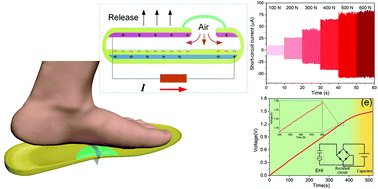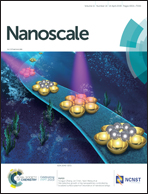An airtight-cavity-structural triboelectric nanogenerator-based insole for high performance biomechanical energy harvesting†
Abstract
Human biomechanical energy is considered as a potential solution for providing electricity to wearable electronics due to its fluctuating amplitude and low frequency. Here, we present a waterproof and high-performance triboelectric nanogenerator (TENG)-based insole to scavenge human motion energy for the sustainable working of portable devices. In the protocol, an airtight-cavity-airbag structural insole based on a TENG was designed to collect mechanical energy. An elastic airbag was used to drive the contact and separation of triboelectric layers through their corresponding expansion and contraction. Owing to these structural innovations, this TENG-based insole performs with outstanding electrical output, is able to generate an alternating current with a maximum power of 5.47 mW under human walking, and can charge a 960 μF capacitor to 1.5 V in 9 min. With this novel structure, the designed insole can be a great wearable energy harvesting device for driving wearable electronics with energy converted from human motion. The results suggest broad potential applications ranging from powering personal sensing devices to the Internet of Things.



 Please wait while we load your content...
Please wait while we load your content...